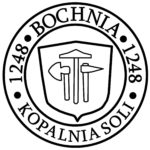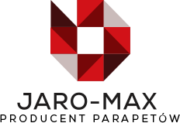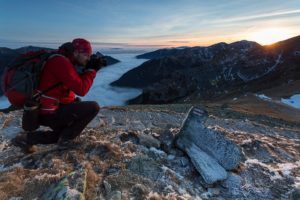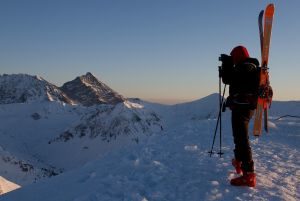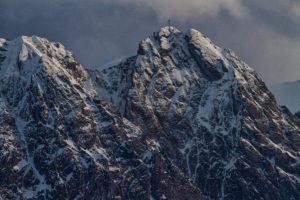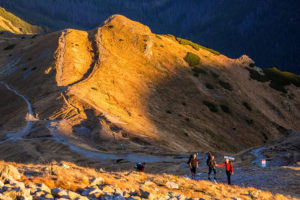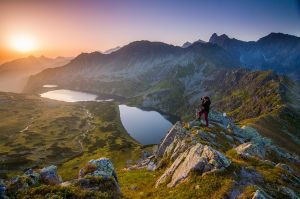DAY1
10.00-10.30 Opening Address and Welcome
10.30-12.00 Session 1 and Session 2
Session 1 ROOM 1
Adelina Paszajewa, Aldona Siwak, Filip Mazurkiewicz, Michał Maruta
2. Assessment of medicinal qualities of groundwater of “Zdrój Główny” in Krzeszowice
Piotr Rusiniak
3. Efficiency of selected anions removal by kaolinite impregnated with iron-bearing nanoparticles
Karolina Rybka, Paulina Maziarz, Jakub Matusik
4. The factors affecting the time of migration of conservative pollutants from the surface to the aquifer on the example of the Łukowica River catchment area
Damian Pietrzak
5. Assessment of the quantitative and chemical groundwater and surface water status of the Wątok river catchment area
Marzena Połeć
6. Predicted thermodynamic properties based on the effect of substitutions on the stability and solubility of apatites.
Bartosz Puzio, Maciej Manecki
Session 2 ROOM 2
Dmitriy A. Mamontov
2. Preliminary report on morphological variation of in-situ spores of the Late Devonian genus Kossoviella
Anna Lidskaya, Olga A. Orlova, Natalia Zavialova, Sergey Snigirevsky, Aleftina Jurina
3. Paleogeographical interpretation of the heavy mineral assemblages from the Albian to Cenomanian sediments of the Klape Unit, Tatric & Fatric units
Simona Bellová & Roman Aubrecht
4. Bajocian (Middle Jurassic) palaeoenvironment in central part of Polish Basin
Zakrzewski, A., Kowalski, A., Kosakowski, P.
12.00-12.30 Coffee break ~ 30 min
12.30-14.00 Session 3 and Session 4
Session 3 ROOM 1
Magdalena Sęk, Elżbieta Hycnar
2. The novel magnetic adsorbents doped with Fe3O4 nanoparticles for As(V) and Cr(VI) removal
Paulina Maziarz, Jakub Matusik
3. Synthesis and preliminary characterization of ferrihydrite, feroxyhyte and akaganéite containing high amounts of Si: Probable new precursors for the thermal formation of amorphous iron(III) oxide polymorphs?
Pieczara Gabriela, Olaf Borkiewicz, Manecki Manecki
4. Photoactivity of organically modified layered minerals
Anna Koteja, Karolina Góra, Anna Łepko, Izabela Biskup, Jakub Matusik
5. Sorption properties of ferruginous sludge from Water Treatment Plant
Magdalena Wołowiec, Tomasz Bajda, Grzegorz Rzepa, Łukasz Drewniak, Klaudia Debiec, Małgorzata Komorowska-Kaufman, Alina Pruss
6. Characteristics of physico – chemical properties of substitutes for iron mineral pigments
Beata Kosa-Burda, Alicja Kicińska
Session 4 ROOM 2
Eryk Święch, Paweł Wandycz, Tomasz Maćkowski
2. Primary approach to the detection of lithium brines by ASTER remote sensing in the Salar del Hombre Muerto, northwest Argentina
Pablo Javier Echevarria
3. Preliminary results of application ray tracing technique using GPU to estimate first breaks of P-wave in 3D simple geological medium
Mateusz Kwaśniewski, Maciej Dwornik, Kamil Szostek
4. Velocity model calibration – challenges for downhole microseismic data analysis
Eryk Święch, Paweł Wandycz, Tomasz Maćkowski
14.00-15.00 LUNCH
15.15- 16.30 Session 4 and Session 5
Session 4 ROOM 1
Mateusz Sęk, Adam Pieczka, Diana Twardak
2. A brief description of detrital chromian spinels from the Prishtina district, Eastern Kosovo: preliminary data from mineralogical and geochemical studies
Magdalena Ożóg
3. Tin-silicate mineralization in the eastern envelope of the Karkonosze granite
Marta Polak, Bożena Gołębiowska, Adam Pieczka
4. Cordierite–dumortierite–tourmaline assemblage in a pegmatite from Lubachów, the Góry Sowie Block, SW Poland
Diana Twardak, Adam Pieczka, Eligiusz Szełęg, Bożena Gołębiowska, Adam Włodek
5. Travertine facies at Čerená hill (Liptov, Slovakia)
Przemysław Sala
Session 5 ROOM 2
Adam Fheed, Natalia Radzik, Joanna Górka, Artur Krzyżak
2. The study of autochthonous Miocene rocks in the T-1 borehole profile with application of the mercury injection capillary pressure method.
Bartosz Głuszczak, Alicja Pstrucha, Ewa Pstrucha
3. Experimental measurements of methane and carbon dioxide emissions in the area of porphyry quarry in Miękinia.
Adrianna Góra, Piotr Guzy, Anna Twaróg, Henryk Sechman
4. Distribution of light hydrocarbons and CH4, CO2 fluxes in the area of gas macro-seepage – Polish Outer Carpathians
Anna Twaróg, Adrianna Góra, Mateusz Ochman, Jacek Przybytek, Piotr Guzy, Henryk Sechman
5. Geomechanical properties of Miocene sediments in the Carpathian Foredeep Basin.
Małgorzata Ponikowska, Bartłomiej Liana
DAY 2
9.30-10.00 Keynote Speaker: Pauline Jeanneret: Role of partal meltng and deformaton on the preconcentraton of uranium in the continental crust: example of the Mudjatk – Wollaston transiton zone, Saskatchewan – Canada (ROOM 1)
10.15-11.30 Session 6 and Session 7
Session 6 ROOM 1
Michał Bukała, Iwona Klonowska, Jarosław Majka, Christopher Barnes, Karolina Kośmińska
2. Exhumation dynamics of the UHP Seve Nappe Complex, Scandinavian Caledonides – Petrographic and geochemical analysis of eclogite host rocks
Christopher Barnes, Jarosław Majka, David Schneider, Michał Bukala, Katarzyna Walczak
3. Pressure-temperature profile along the COSC-1 drill core, the Lower Seve Nappe, Swedish Caledonides
Johanna Holmberg , Sofia Korhonen , Iwona Klonowska , Jarosław Majka, Henning Lorenz
4. X-ray µCT modeling of the garnets in the Międzygórze eclogite, Bohemian Massif, Poland
M.Młynarska,K. Kośmińska, J. Tarasiuk, S. Wroński, J. Majka, I.Klonowska
5. Searching for melt inclusions in granulites from Góry Sowie Block
Paweł Słupski, Silvio Ferrero, Katarzyna Walczak
Session 6 ROOM 2
Maciej Pastuszka, Piotr Guzy, Henryk Sechman
2. Petrophysical features of deformation bands in Eocene flysch sandstones of the Magura Nappe (Outer Carpathians)
Natalia Radzik, Anna Świerczewska
3. Variability of methane and carbon dioxide fluxes in the vicinity of tectonic dislocation in the Cracow region.
4. Metal compound activation as factor increasing zeolites affanity to mercury
Piotr Kunecki, Dorota Czarna, Rafał Panek, Magdalena Wdowin
Coffee break ~ 30 min
12.00-12.30 Invited Speaker: Jarosław Majka: Apatite-monazite-allanite relations in the Kiruna-type iron ores
12.30-13.30
Session 6 ROOM 2
Iwona Klonowska
2. Iron oxide ores and metagabbros from a shear zone between Pinkie and Grampianfjella Units on Prins Karls Forland, Svalbard: their origin and evolution.
M. Maraszewska, G. Ziemniak, M. Manecki, J. Czerny, D. Schneider, P.I. Myhre,
K. Faehnrich, C. Barnes
3. How to decipher the P-T evolution of strongly deformed metapelites?
K.Kośmińska, F.Spear, J.Majka, M.Manecki
4. Age dating and microstructure analysis of shear zones found within the Seve Nappe Complex in the Åre region, Jämtland, Scandinavian Caledonides
Cameron Alessandrini, Jaroslaw Majka
5. Detrital zircon analysis of Precambrian metasediments from Wedel Jarlsberg Land (Svalbard) – implications for local tectonostratigraphy and high Arctic correlations
Grzegorz Ziemniak, Karolina Kośmińska, Jarosław Majka, Maciej Manecki, Chris Barnes
Session 7 ROOM 2
Michał Maruta, Vitalii Kulynych
2. Hydrodynamic differences between gravity flows in turbidite succession at Skrzydlna quarry (Menilite Formation)
Paweł Godlewski, Aneta Siemińska, Marek Wendorff
3. Studies on energy distributions of strong seismic events in the USCB
Agnieszka Bracławska

